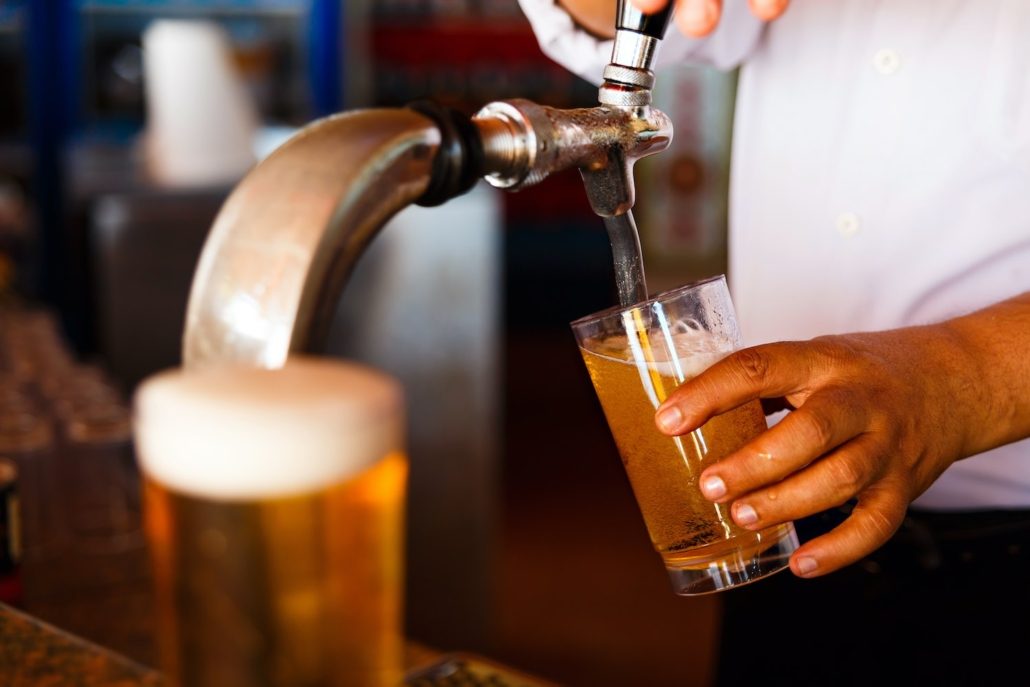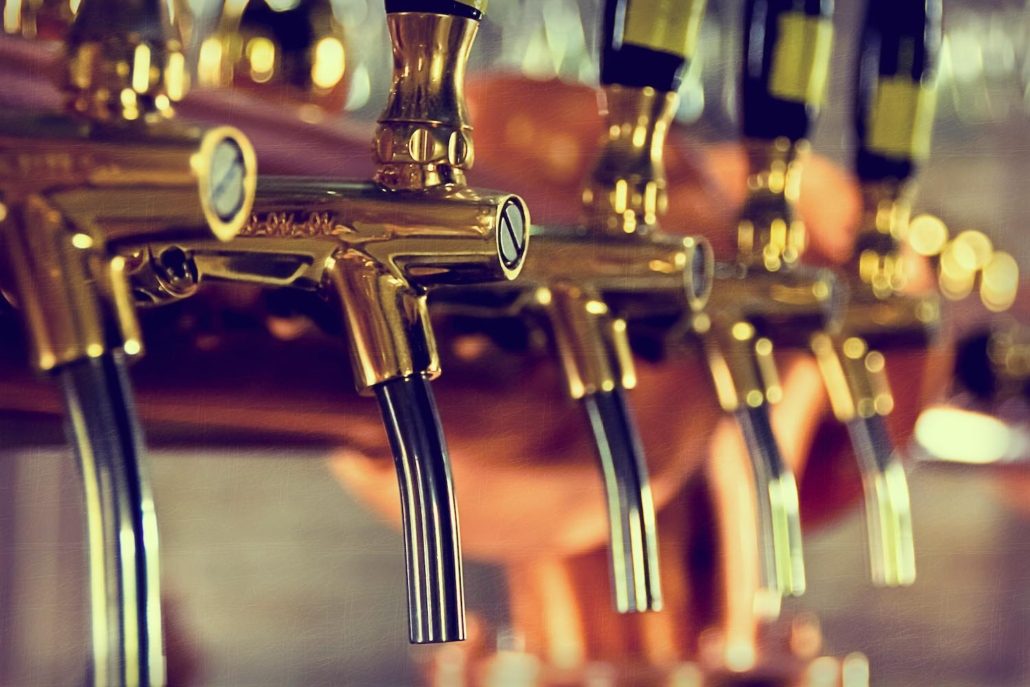BEER EXPLAINED
A short guide to beer styles
WORDS BY ANNE FITTEN GLENN
***
One of the magical things about beer is that brewers can create an almost infinite variety of styles using only four ingredients. Three of these ingredients are those that make beer into beer—hops, malt and yeast—and the fourth, water, is what makes beer a most delightfully drinkable liquid.
To be sure, there are entire databases of hop and malt varieties and subvarieties, each of which imparts unique flavors and aromas to the final product. Then there is yeast, the prolific living organism that alchemizes sugars into alcohol and carbon dioxide. Fermentation businesses have wrangled hundreds of different yeasts into purchasable packaging, each of which offers specific flavors and aromas. Some brewers experiment with free-floating wild yeast as well. In other words, you get whatever lands in an open tank and ferments. Thus, brewers can tap into a huge combination of hops, malts and yeasts for each and every beer they create.
Even beer’s primary ingredient, H2O, can differ in pH, minerals and salt content, depending on, well, a whole other set of circumstances.
While these four ingredients constitute most every beer, there’s no rule that beers can’t include additional ingredients, called adjuncts, as well. At least that’s the case in America. Germany has an actual ancient law against adjuncts in beer. But here, you might find fruit, spices, chocolate, vegetables and even bacon in whatever fermented malt beverage you’re enjoying.
These simple ingredients—when combined by a brewer or brew team, according to a recipe or not—become this complex beverage, which is further defined by the style group it falls into.

Below are a few beer styles you’re likely to encounter in Western North Carolina breweries, although this is only a drop in the barrel compared to the more than 170 different styles compiled by the national Brewers Association (BA), as a reference for brewers and beer competitions.
If you really want to geek out, you can download a beer style app or check out the Beer Judge Competition Program (BJCP) guidelines. In that competition program, every style is broken down into overall impression, aroma, appearance, flavor, mouthfeel, history, characteristic ingredients, style comparison, vital statistics and commercial examples. The BJCP introduction emphasizes that beer styles evolve over time, so this is a general guide and might not correlate exactly to what you’re drinking at your favorite watering hole.
Every Asheville-area brewery is likely to have an India pale ale (IPA) or two on hand, as this style has become an American craft beer favorite, among both brewers and drinkers, over the past decade. From Asheville Brewing Co’s Perfect Day to Burial Beer’s Surfwax, there are many solid choices of local IPAs.
Lagers, meanwhile, have made a comeback and evolved beyond being “lawn mower” beers. An entire new generation of drinkers are embracing beers such as sours, which aren’t your grandpa’s brew. Then there are seasonals and one-offs, which can fall into any of many styles, and often can only be found at a brewery’s taproom.
You don’t need to be an expert to branch out and try a new beer style now and again. WNC is rife with breweries, and most of them offer tasters and flights, so belly up to the bar and expand your taste buds. I’ve said it before and I’ll say it again: Fresh beer is the best beer. Whenever possible, it should be experienced at the source of manufacture (aka, where it’s brewed).
Additionally, certain styles wax and wane in popularity over time. Some of y’all will remember the popularity of blondes (not the hair color) early in the craft beer renaissance, and the more recent short ascensions of pale lagers and sessions. The latter refers to a beer that’s low enough in alcohol by volume (ABV) to drink more than a couple in a session (4% or lower). There always will be folks who stick to domestic lagers (think Budweiser) while beer aficionados tend to be mavericks looking for more flavor and complexity.
Luckily for us mavericks, innovation is a hallmark of the American brewing industry. Thus, a beer described as a particular style might not fit exactly within the BJCP or BA guidelines. I recently drank a local dark lager that tasted more like a pale ale to me, so I asked the brewer what he was thinking. “It’s a hoppy dark lager,” he said. That style was new to me and a bit of a surprise. But the beer was delicious, and I’m a fan of fermentative creativity.

Here are some standard beer styles you’re likely to encounter in and around Asheville’s many breweries (and probably wherever you’re drinking beer). I’ve kept them general for easy digestion. Also, everyone’s palate is a little different, so go with what works for yours.
PALE ALES
Light to medium color and body with hoppy aroma and flavor. Medium to low maltiness. Medium bitterness means this is a good style to drink with a variety of foods. Pales are my go-to when I’m feeling overwhelmed and indecisive at a brewery.
INDIA PALE ALES
A pale ale with extra oomph! A step up from its pale sibling in bitterness, aroma and flavor. Hops attributes can be floral, citrusy, piney, fruity, oniony, catty or more. IPAs often have higher ABV than pales. A great style to drink with high-fat-content foods, such as burgers or pizza, as the bitterness serves as a palate cleanser.
LAGERS
Typically crisp and dry. While domestic lagers have a sweetness that comes from corn or rice adjuncts, craft beer lagers can have more of a floral hop presence. There are American, European and Czech-style lagers. They can be light or dark, but most often are almost clear in color. Lagers are usually lower in ABV than other styles and easily quaffable. Nothing tastes better after a sweaty hike or bike ride with the protein bar of your choice.
BELGIANS
This style is difficult to quantify as there are so many sub-types of Belgian beer. It’s one of the world’s oldest distinct beer styles. Typically not hoppy or too malty, but fruity or spicy with a sweet aftertaste from the yeast esters. I personally think Belgians are the best styles to drink with food. My perfect meal is a variety of Trappist brews paired with an overflowing cheese and charcuterie board. Note that sours and wheats are sub-categories of Belgians, but I’ve listed them sepa – rately to help when you’re reading a beer menu.
WHEATS
Typically fruity, lightly spicy and bubbly. Never heavy. Wheat is the primary fermentable malt as opposed to the more typical barley. Refreshing and popular during the warmer months. A great brunch beer. SOURS Sour brews have increased in popularity along with other styles of beer that don’t taste like tradition – al beer. Fruity, acidic and tart. Often funky—can smell like a barnyard, and that’s considered a good thing. Sours can be bitter or not, hoppy or not. They shouldn’t be malty, however. Because they are highly flavorful, sours can stand up to foods that are bitter, salty or fatty.
STOUTS
Very dark, sweet, full-bodied, usually roasty ales. Stouts often taste of coffee, chocolate or caramelized sugar. Not necessarily higher in alcohol than other styles unless noted as double or imperial. A great beer to drink with dessert. A stout with a slice of cheese – cake tastes like heaven.
PORTERS
Rich, malty, medium-full dark ale. Typically less of a strong roasted barley character than a stout. Like stouts, porters are great dessert beers, although I really like how the latter contrasts with spicy foods, such as Indian or Mexican dishes.
If you have further style questions, ask your beertender for help. But please don’t ask me how many beer styles or breweries there are now in WNC because I’ve given up trying to keep track. Cheers!
THE WEEKLY REVEL
Sign up for your free handpicked guide to enjoying life around Asheville.
Available weekly from May to October.





